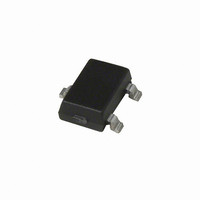A1384LLHLT-T Allegro Microsystems Inc, A1384LLHLT-T Datasheet - Page 13

A1384LLHLT-T
Manufacturer Part Number
A1384LLHLT-T
Description
IC SENSOR HALL EFFECT SOT23-W
Manufacturer
Allegro Microsystems Inc
Series
A138xr
Type
Linear - Programmabler
Datasheet
1.A1381ELHLT-T.pdf
(19 pages)
Specifications of A1384LLHLT-T
Sensing Range
2mV/G ~ 3mV/G
Voltage - Supply
4.5 V ~ 5.5 V
Current - Supply
8mA
Current - Output (max)
10mA
Output Type
Analog, Ratiometric
Operating Temperature
-40°C ~ 150°C
Package / Case
SOT-23W
Peak Reflow Compatible (260 C)
Yes
Accuracy %
1.5%
Supply Voltage
5V
Output Current
2mA
Termination Type
SMD
Bandwidth
27kHz
Supply Voltage Max
5.5V
Sensitivity
2 To 3 MV/G
Leaded Process Compatible
Yes
No. Of Pins
3
Hall Effect Type
Linear
Supply Voltage Min
4.5V
Operating Temperature Max
150°C
Rohs Compliant
Yes
Filter Terminals
SMD
Operating Temperature Min
-40°C
Lead Free Status / RoHS Status
Lead free / RoHS Compliant
Features
-
Lead Free Status / RoHS Status
Lead free / RoHS Compliant, Lead free / RoHS Compliant
Other names
620-1199-2
A1381, A1382,
A1383, and A1384
in figure 3, decimal code 5 is equivalent to the binary number
101. Therefore bit 2 (code 4) must be addressed and blown, the
device power supply cycled, and then bit 0 (code 1) addressed
and blown. An appropriate sequence for blowing code 5 is shown
in figure 4. The order of blowing bits, however, is not important.
Blowing bit 0 first, and then bit 2 is acceptable.
Note: After blowing, the programming is not reversible, even
after cycling the supply power. Although a register bit field fuse
cannot be reset after it is blown, additional bits within the same
register can be blown at any time until the device is locked. For
example, if bit 1 (binary 10) has been blown, it is still possible to
blow bit 0. The end result would be binary 11 (decimal code 3).
Figure 3. Example of code 5 broken into its binary components, which are
code 4 and code 1.
Address Code Format
Address Code Format
Bit Field Selection
Code in Binary
Fuse Blowing
Fuse Blowing
Target Bits
V
V
V
P(HIGH)
P(LOW)
P(MID)
V+
0
V
CC
= 0 V
Code 4
(Decimal Equivalents)
(Decimal Equivalent)
Bit 2
Programmable Linear Hall Effect Sensor ICs with Analog Output
Figure 4. Example of programming pulses applied to the VOUT pin that
result in permanent parameter settings. In this example, the register cor-
responding to key 1 is selected and code 5 is addressed and blown.
(Binary)
1 0 1
Code 5
Selection
Register
Available in a Miniature Thin Profile Surface Mount Package
(Key 1)
Code 1
Bit 0
Addressing
(Code 4)
Programming of Code 5 in Key 1
(Code 4 in
Key 1)
Blow
t
BLOW
Locking the Device
After the desired code for each parameter is programmed, the
device can be locked to prevent further programming of any
parameters.
Additional Guidelines
The additional guidelines in this section should be followed to
ensure the proper behavior of these devices:
•
•
•
•
•
V
A 0.1 μF blowing capacitor, C
the VOUT pin and the GND pin during programming, to ensure
enough current is available to blow fuses.
The C
application with a suitable C
is 10 nF for proper operation.)
The power supply used for programming must be capable of
delivering at least 26 V and 300 mA.
Be careful to observe the t
down the device after blowing each bit.
The following programming order is recommended:
CC
1.
2.
3.
4.
5.
= 0 V
POL
TC
Sens
V
LOCK (only after all other parameters have been pro-
grammed and validated, because this prevents any further
programming of the device)
OUT(Q)
BLOW
SENS
Selection
Register
(Key 1)
blowing capacitor must be replaced in the final
Addressing
(Code 1)
(Code 1 in
Key 1)
Blow
115 Northeast Cutoff, Box 15036
Allegro MicroSystems, Inc.
Worcester, Massachusetts 01615-0036 (508) 853-5000
www.allegromicro.com
LOW
L
. (The maximum load capacitance
BLOW
delay time before powering
V
CC
= 0 V
, must be mounted between
13














